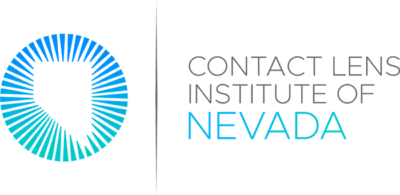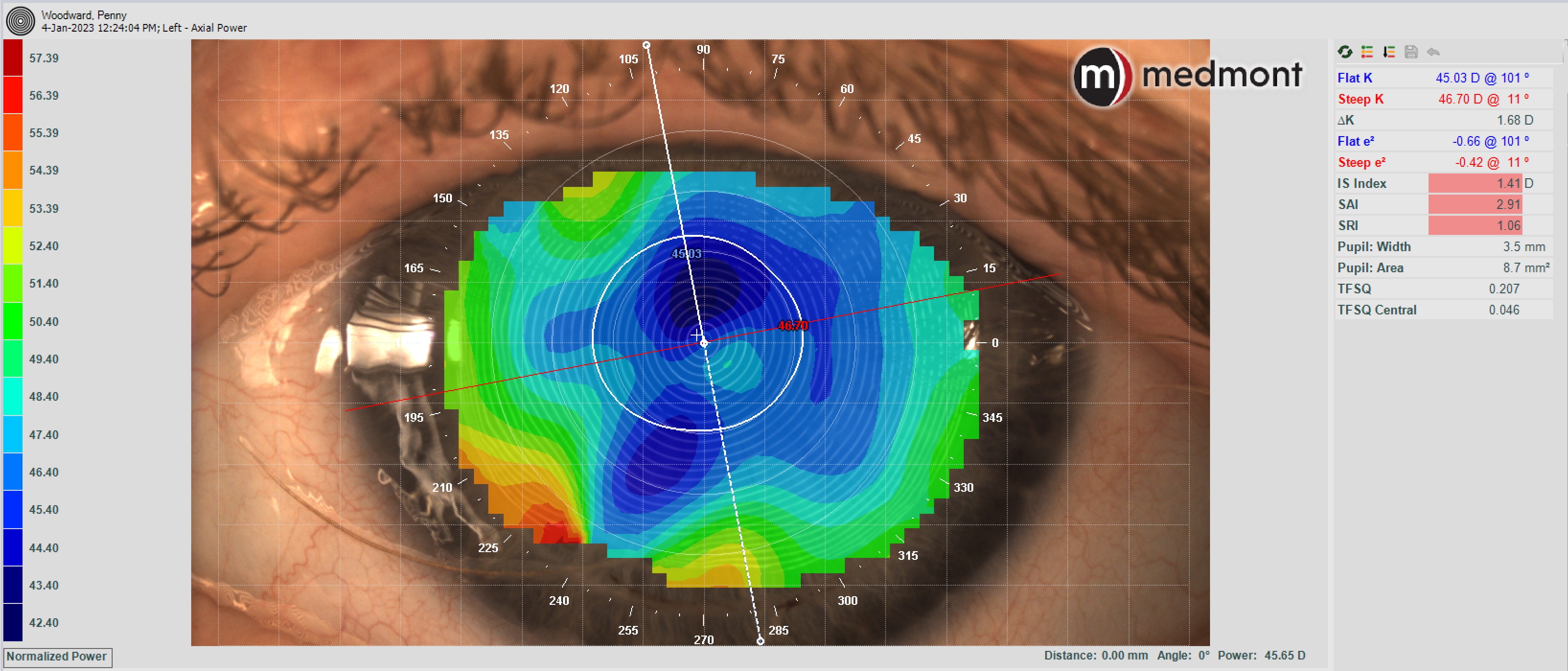Keratoconus is a progressive and chronic eye condition that leads to blurry vision, and distorted vision, and can result in damage to the cornea.
With keratoconus, the cornea becomes thinner and steeper over time until the condition stabilizes – usually in the thirties or forties. Treatments for keratoconus focus on either improving the vision or stabilizing the cornea.
To improve vision with keratoconus, contact lenses – including hard gas permeable contact lenses or scleral contact lenses are often the best option. To stabilize the cornea, surgical intervention is needed. Early keratoconus can be treated with corneal cross-linking to help limit the future progression of the condition. Advanced keratoconus may require a corneal transplant to prevent additional adverse complications such as scarring or perforation.
How Keratoconus Impacts the Eyes
Keratoconus results from abnormal changes to the cornea due to malformations within the collagen structures of the cornea.
Notably, the inferior central portion of the cornea will thin and become excessively steep in comparison to the remaining cornea.
As these changes occur, new and irregular astigmatism will be induced by the corneal changes.
Astigmatism that is created by the changes from keratoconus is particularly bothersome due to the asymmetric nature of astigmatism.
"Dr. Woo's Thoughts on Scleral Lenses For Keratoconus and Corneal Transplant"
Today we saw a lovely 55 year old white female for a consultation for specialty contact lenses. She has keratoconus in both eyes, and had a corneal transplant a few years ago in the left eye. She also had cataract surgery in both eyes, as well as a vitrectomy in the right eye.
She currently wears a corneal gas permeable lens in the right eye and a synergeyes VS scleral lens in the left eye. Her goals were to improve her vision and improve the fit of both lenses.
We took some images with a scleral topographer, which yielded a scleral lens map to assist us with the fitting process. We applied diagnostic scleral lenses to the right eye and left eye.
With an over-refraction, she could see 20/20 in the right eye and 20/30-2 in the left eye.
She was thrilled with the vision and the comfort of the scleral lenses. We designed and ordered her custom lenses today, and we will see her back for a dispense in a few weeks.
Contact Lenses for Keratoconus
The best way to improve vision in an individual with keratoconus is by using contact lenses. The preferred contact lenses for keratoconus correction are either hard gas-permeable contact lenses or large scleral contact lenses.
Gas-permeable contact lenses are small, hard lenses that are designed to sit centrally on the eye and allow the tears to flow behind the lens and create a smooth surface over the cornea.
The irregularities of a keratoconus cornea are masked with the tear film in a gas-permeable lens and the vision can be corrected much easier than with glasses.
However, gas-permeable contact lenses may be uncomfortable and have a limited ability to be worn as the changes from keratoconus become more significant.
In these more advanced cases, scleral contact lenses are the better option. These are large hard contact lenses which vault the cornea and rest on the white of the eyes.
The scleral lenses are filled with sterile saline solution and have tears flow beneath the lens and create a smooth surface for the eye.
Corneal Cross-Linking for Keratoconus
Corneal cross-linking is a surgical procedure used to stabilize the cornea and prevent advanced changes from keratoconus.
With cross-linking, the collagen in the cornea is made more rigid and is therefore prevented from thinning or steepening.
The best time to use corneal cross-linking is early in the progression of keratoconus as there is limited ability to reverse changes that have already occurred.
Corneal Transplant Surgery for Keratoconus
If keratoconus advances to a stage that is dangerous to the eye or unable to attain functional vision even with specialty contact lenses, a corneal transplant may be needed.
This surgery replaces the cornea with a donor cornea to remove the damaged cornea and allow improved vision and eye health.


